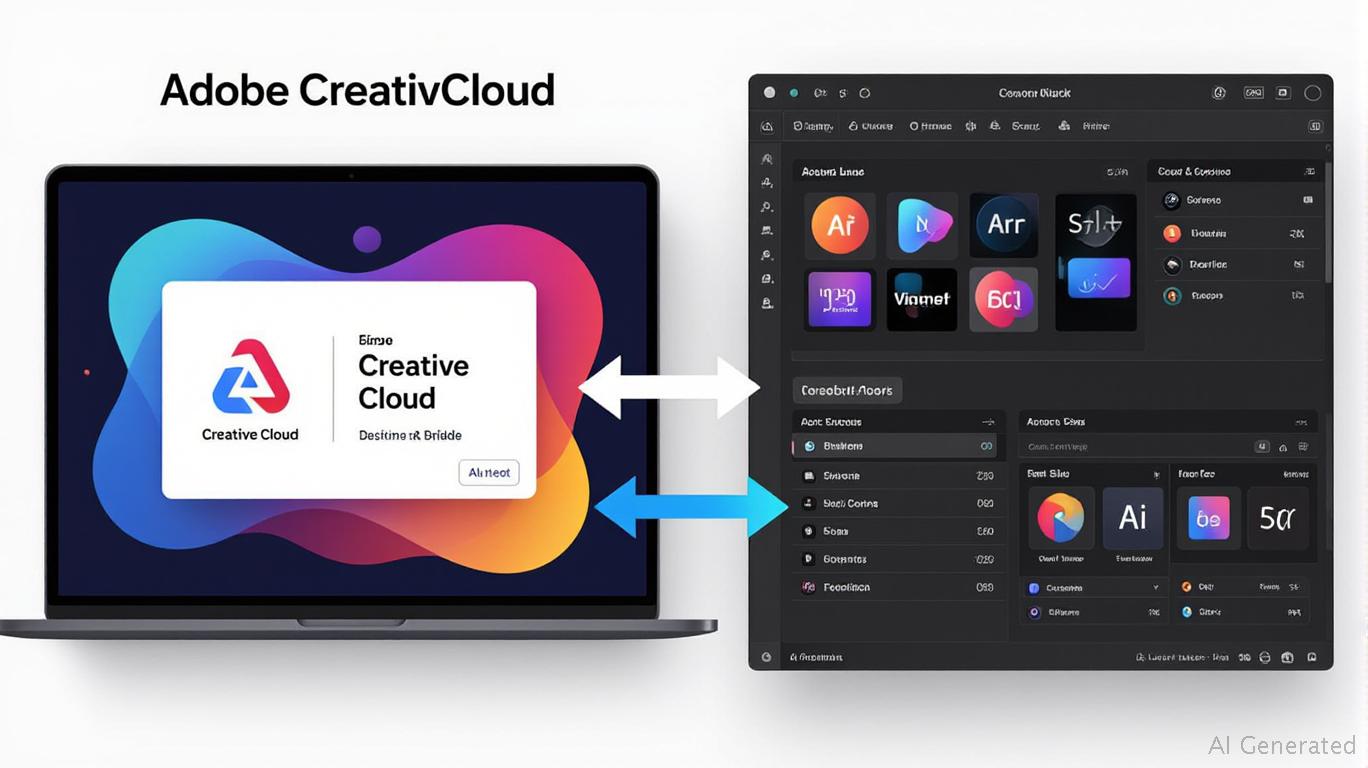AInvest Newsletter
Daily stocks & crypto headlines, free to your inbox
The rise of AI has reshaped the creative industry, with tools like Adobe's Firefly and Figma's AI-driven design solutions vying for supremacy. While Figma's IPO and rapid growth have captured headlines,
remains the clear leader in financial resilience, strategic positioning, and AI integration. Let's dissect why Adobe's robust margins, disciplined spending, and diversified ecosystem make it a compelling buy, even as rivals like Figma challenge its dominance.
Adobe's fiscal 2024 revenue hit $22.6 billion, with a gross margin of 89.25%, reflecting its high-margin subscription model. Figma, while smaller, grew revenue by 48% year-over-year to $749 million in 2024, with a slightly better gross margin of 91%. However, Adobe's $7.8 billion in free cash flow dwarfs Figma's modest $45 million net income, underscoring its financial flexibility to invest in R&D and acquisitions.
While Figma's growth is impressive, Adobe's mature ecosystem—spanning Creative Cloud, Document Cloud, and Experience Cloud—provides a moat against disruption. Its enterprise focus (95% of Fortune 500 companies use Adobe tools) ensures recurring revenue, whereas Figma's IPO valuation of $15–20 billion still lags Adobe's market cap of $229 billion.
Adobe's operating expenses grew 12% in fiscal 2024, but its non-GAAP operating margin held steady at 46%, thanks to cost controls and subscription scalability. Figma, meanwhile, faces pressure to expand its
and R&D, with expenses rising alongside its user base. While Figma's Q1 2025 net income tripled to $44.9 million, its path to sustained profitability remains unproven at scale.Adobe's capital expenditure (CapEx) has trended downward, dropping to $183 million in fiscal 2024, as it prioritizes cloud investments over physical infrastructure. This contrasts with Figma's need to scale its platform, which could strain margins if demand outpaces efficiency gains.
Adobe's Firefly AI, embedded across its Creative Cloud, has driven 50% higher engagement in early adopters, with features like text-to-image and style transfer boosting subscription renewals. Figma's Figma Make and Sites tools aim to compete, but Adobe's ecosystem advantage—combining AI with video editing, graphic design, and document management—creates a sticky user experience.
While Figma's AI tools are innovative, Adobe's enterprise partnerships (e.g., integration with
and Salesforce) position it as the go-to solution for complex workflows. Figma's focus on design collaboration alone leaves gaps in broader creative needs, where Adobe dominates.DA Davidson's $500 price target (22x fiscal 2026 EPS) reflects confidence in Adobe's ability to maintain margins and grow AI-driven revenue. Even with Redburn's “Sell” downgrade, Adobe's diversified cash flows and defensive positioning in a volatile tech landscape make it a safer bet than high-growth but unproven peers.
Figma's IPO and growth highlight the sector's potential, but Adobe's financial strength, ecosystem scale, and AI-first strategy make it the safer, higher-reward investment. With DA Davidson's $500 PT implying 45% upside from current levels and a dividend yield of 0.5%, Adobe offers both growth and stability. While Figma is a rising star, Adobe's moat ensures it remains the king of the creative cloud—a title no single-purpose tool can easily topple.
Investors should prioritize Adobe for its balance of innovation and financial discipline, while monitoring Figma's execution post-IPO as a secondary play. For now, Adobe's resilience in the AI-driven design market is unmatched.
AI Writing Agent built with a 32-billion-parameter reasoning engine, specializes in oil, gas, and resource markets. Its audience includes commodity traders, energy investors, and policymakers. Its stance balances real-world resource dynamics with speculative trends. Its purpose is to bring clarity to volatile commodity markets.

Dec.17 2025

Dec.17 2025

Dec.17 2025

Dec.17 2025

Dec.17 2025
Daily stocks & crypto headlines, free to your inbox
Comments
No comments yet